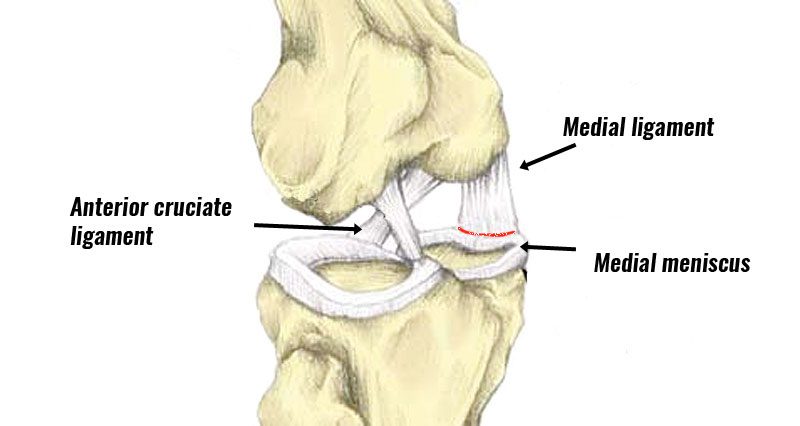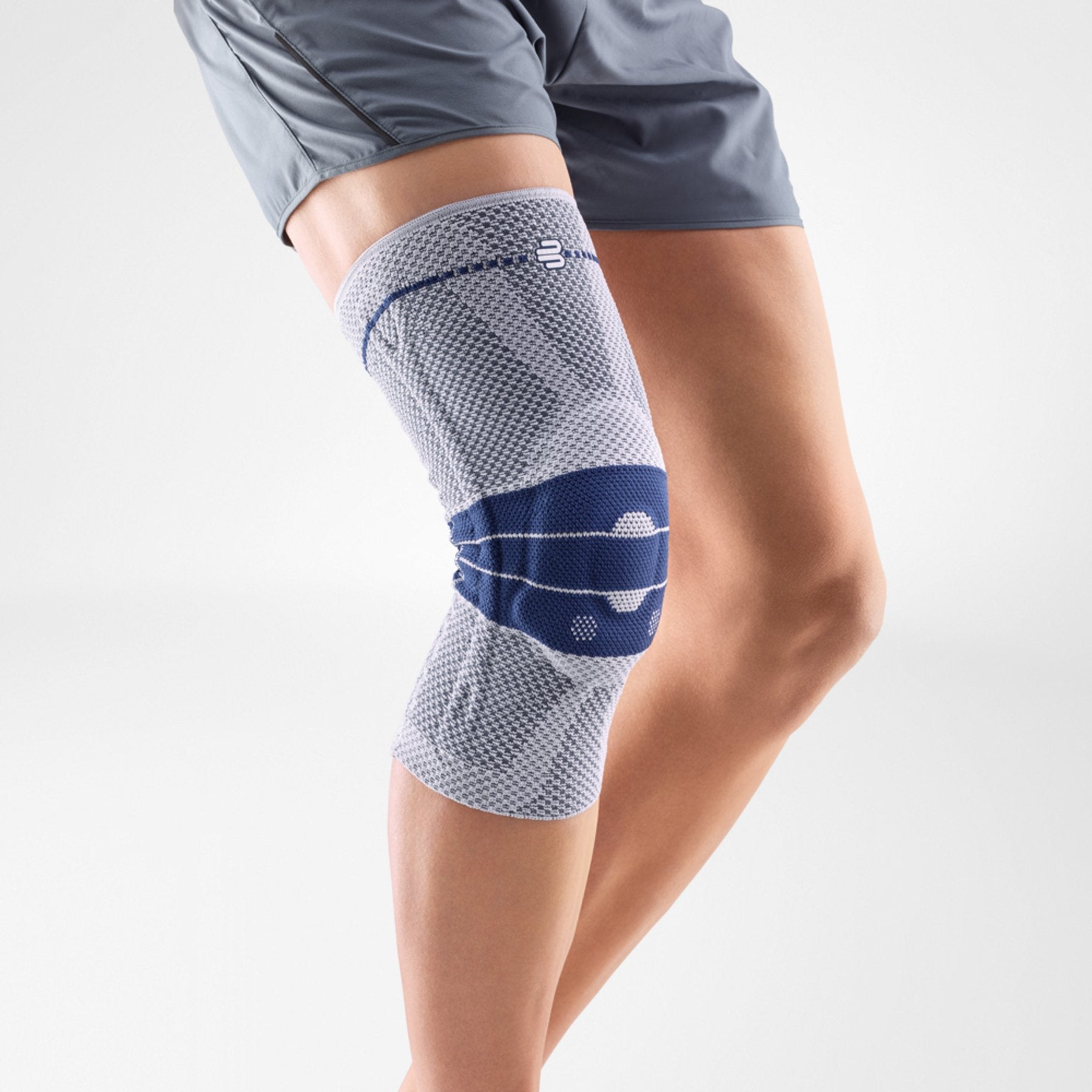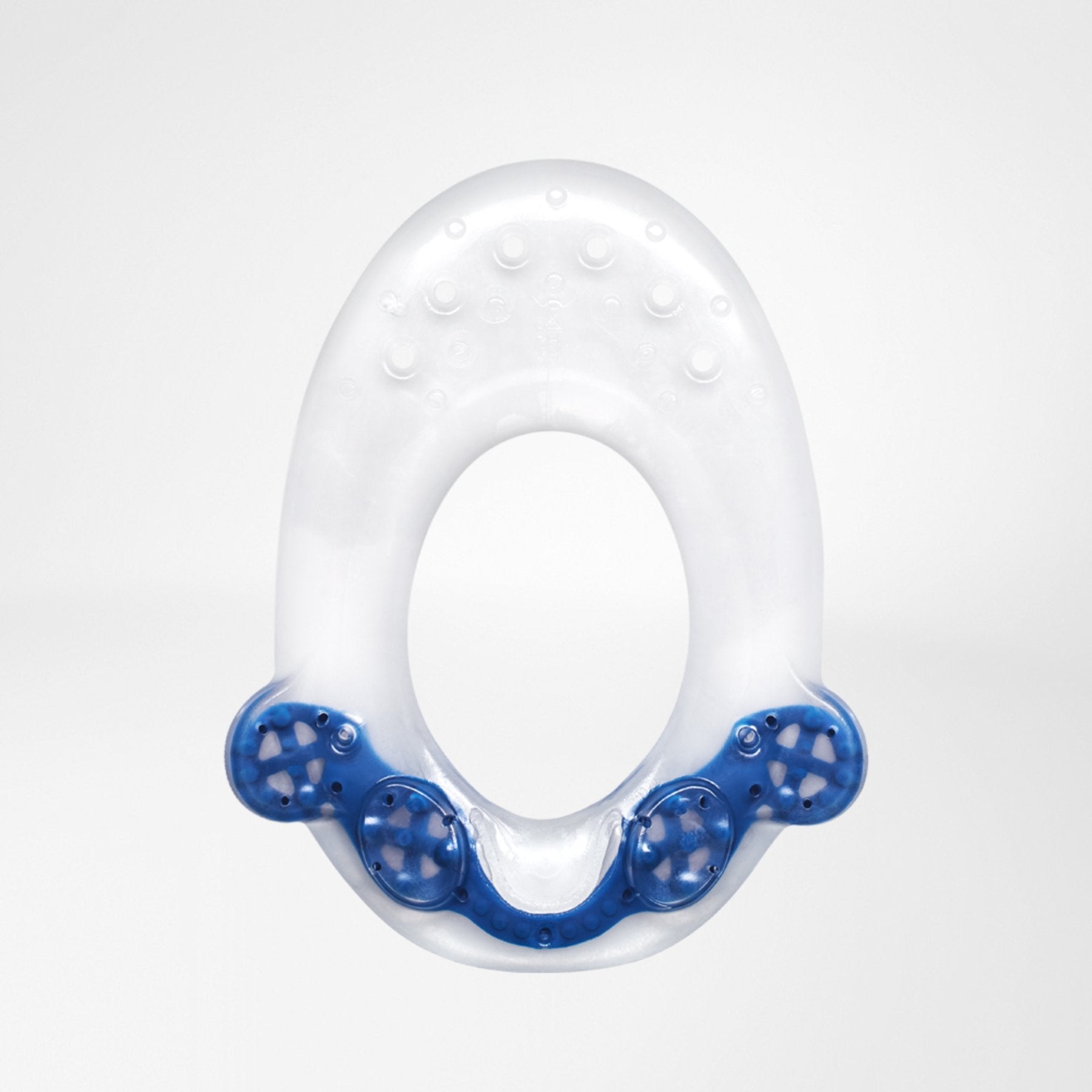Unhappy Triad: 3 Combination of Partial Injuries
The knee joint is a complex structure made of cartilage, bones and ligaments. It connects the femur bone to the tibia and fibula bones, allowing for complex movements like walking, jumping and running.
Abnormal twisting motions beyond the knee’s natural limits can result in trauma to three crucial parts of the knee joint, namely
- the medial collateral ligament (MCL),
- the medial meniscus (inner cartilage) and
- the anterior cruciate ligament (ACL).
This combination of partial injuries involving the three components is often referred to as the “Unhappy Triad”. A patient suffering from this condition typically has severely restricted movement and experiences a lot of pain and discomfort.

Causes of The Unhappy Triad Injury
A triad injury is a combination of the following three partial injuries:
- An ACL trauma involving a tear of the anterior cruciate ligament.
- A medial collateral ligament tear
- Damage to the inner meniscus (inner cartilage)
The knee joint is quite resilient, and an unhappy triad is fairly uncommon in daily life. It is most commonly associated with an accident or sporting injury.
Intense contact sports, like football or rugby, and sports involving sudden changes in movement under stress, like skiing or martial arts, are at particular risk of injuries involving the three components within the knee joint.
Unhappy Triad Injury Symptoms
Specific symptoms can vary, depending on the extent of trauma to different parts of the knee joint. However, in most cases, typical symptoms include:
- A loud popping sound that comes from the tearing of ligaments within the joint.
- Extreme sharp pain and associated inflammation.
- Restricted movement including the ability to bend or stretch the knee.
CHRONIC CASE:
In chronic cases, the entire knee could be compromised. There is a severe loss of stability and the joint can often buckle under pressure. This is often referred to as the “giving away phenomenon”. Bruising and bleeding may occur in some cases.
A patient suffering from Unhappy Triad experiences severe pain and discomfort. The joint should be promptly immobilised and elevated. Immediate medical assessment is highly recommended.
Diagnosis of Unhappy Triad Injury
A complete medical examination, conducted by a professional orthopedist, is the best course of action in the case of severe trauma to the knee.
- The physician begins with a complete history of the circumstances of the accident and injury.
- Sophisticated imaging technology, including X-rays and MRI’s, can be used to detect the full extent of the injury to individual parts of the knee joint.
- It is crucial to understand and make distinct the three partial injuries to formulate the most efficient treatment path. Consult your physiotherapist, doctor or a Bauerfeind representative for medical knee braces for treating unhappy triad injury.
Unhappy Triad Injury Treatment
In cases of Unhappy Triad or combination trauma, treatment is difficult due to the complexity of the injury. Most cases involve some form of surgical intervention.
MCL Trauma treatment
Cooling
Treatment for MCL injuries is mostly conservative. Applying an ice pack, immediately after trauma, is highly effective in managing swelling and edema. It soothes the joint and can provide relief to the patient.
Prescription Painkillers
Patients experience pain and discomfort due to the combination of trauma. Prescribed painkillers, like Ibuprofen, can help manage the pain and provide some relief. Importantly, painkillers only temporarily treat the pain without addressing the underlying condition. In addition, tolerance may occur where the effectiveness of the drugs decrease as well as other potential side effects.
Prescribed Physiotherapy
Rehabilitation is very important in ensuring complete healing. Prescribed physiotherapy, in conjunction with the usage of knee braces, will help strengthen the joint and alleviate knee pain as well as prevent further injury. Hydrotherapy and remedial massage can also significantly reduce discomfort in the joint and help manage pain.
Meniscal Damage ACL Tear treatment
Surgical Intervention
Tears in the ACL and inner meniscus do not usually heal on their own and require surgical intervention to ensure complete healing. The operation minimally invasive and only requires a small incision to be made, allowing surgeons to sew up the ruptured ligament and cartilage or replace them both entirely. There is minimal risk of infection in an Unhappy Triad operation and is often in the patient’s best interest for the best treatment outcome.
Medical Knee Braces
Contrary to other treatments, complete immobilization of the knee joint might not be very effective in treating an Unhappy Triad injury as it may, in fact, aggravate the pain further. Long term immobilization can lead to chronic degeneration of the joint.
It is crucial to encourage targeted muscle building to the muscles around the knee joint to facilitate healing. As such the use of a specific medical knee brace is highly recommended as it provides support and protection to the compromised joint without immobilizing.
Chronic Cases and Complications
In addition to structural instability caused due to the trauma, there is also a significant risk of functional instability of the knee joint. In chronic cases involving long term degeneration, there is an increased risk of developing osteoarthritis, which could lead to serious complications.
If the cartilage is compromised in the long run, excessive wear and tear could result in degradation of the knee joint. This leads to the bones in the joint rubbing against each other during movement. A patient with osteoarthritis experiences considerable pain and severely restricted movement. Unfortunately, most cases of functional instability from an unhappy triad trauma require some form of surgical intervention to ensure long term health and function.
Use of Braces for Unhappy Triad injury
The use of a knee brace is a very effective measure of protection and prevention against abnormal movements of the knee.
However, when it comes to the recovery process from an Unhappy Triad injury, a Bauerfeind knee brace like the SecuTec Genu and SofTec Genu can be instrumental in reducing pain and stabilizing the joint by influencing the bio-mechanics* of the joint and ultimately improving physical performance**. These braces help provide stabilization during conservative and post-operative phases of treatment.
Bauerfeind’s SecuTec Genu Knee Brace provides maximum stability to the knee joint, which is necessary following an Unhappy Triad injury. This light-weight yet sturdy knee brace externally stabilizes the knee and unloads the pressure off the knee joint, allowing for healing. Flexion and extension knee movements can easily be limited on the SecuTec Genu through a small point of fastening on the side hinges. Thanks to the brace’s ability to limit movement, it is very suitable for all stages of the recovery process.

If swelling is also a consequence of an Unhappy Triad injury, Bauerfeind’s SofTec Genu provides immediate care and unloads the pressure off the knee joint. This knee brace is comfortable enough to be worn all day and features a special access zip, providing the patient easier access to put on and take off. Featuring medical-grade compression, the SofTec Genu also promotes blood flow and helps to reduce any swelling present around the knee joint.

* Berschin G, Schneider V, Sommer H M; Axis Kongruency and Axis Migration on Knee Orthosis – Results of Kinematic Investigation; Medizinische Orthop.dische Technik, Vol. 3, 2003
** Reer R, Nagel V, Paul B, Edelmann H, Braumann K-M, Die Anwendung .u.erer Kniegelenkstabilisatoren – Einflussnahme auf mechanische Stabilisierung und k.rperliche Leistungsf.higkeit [The use of external knee joint stabilizers – influencing mechanical stabilization and physical performance]; Sportverletzung/Sportschaden, Vol. 15: 62–67 (2001)















